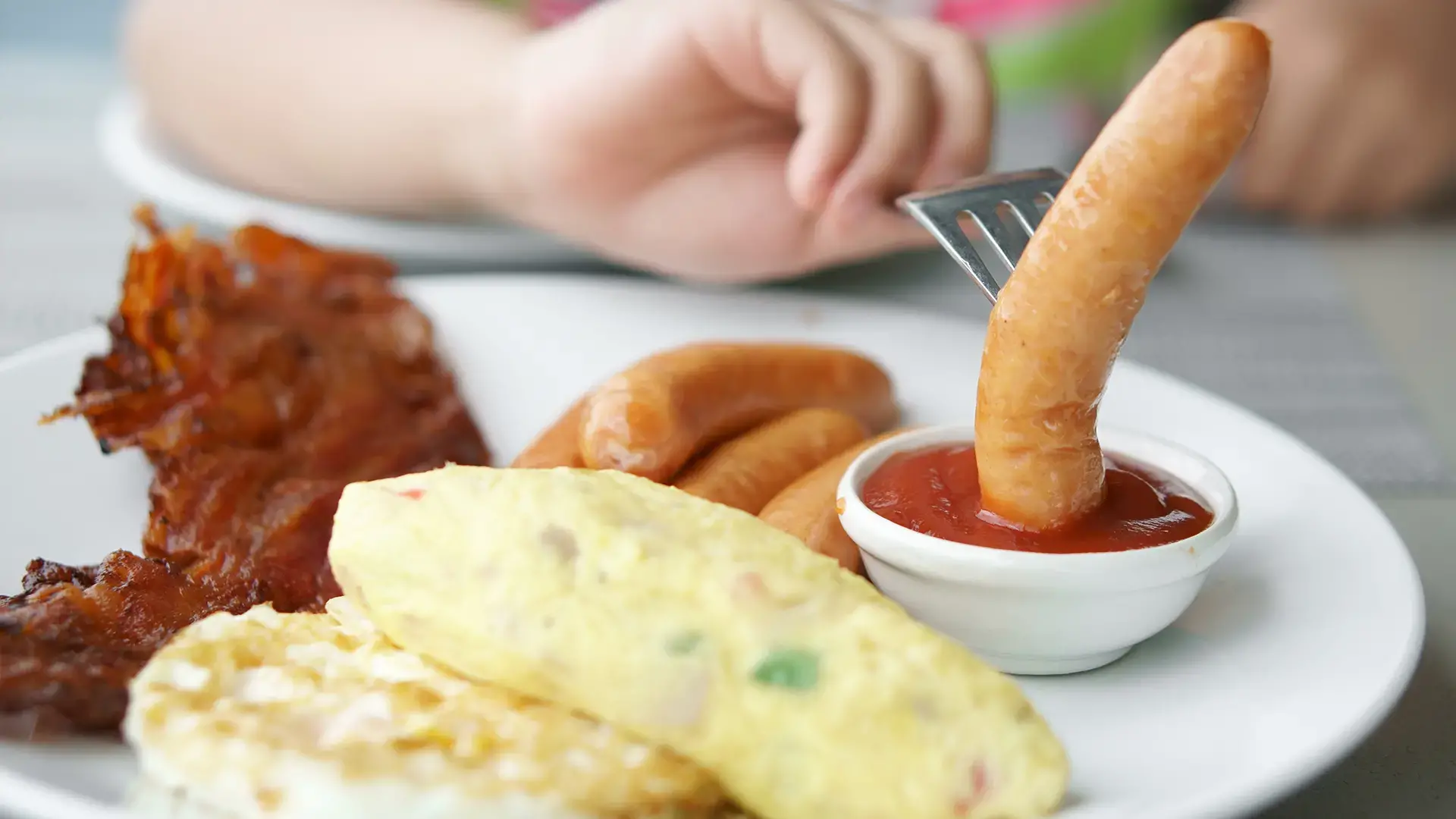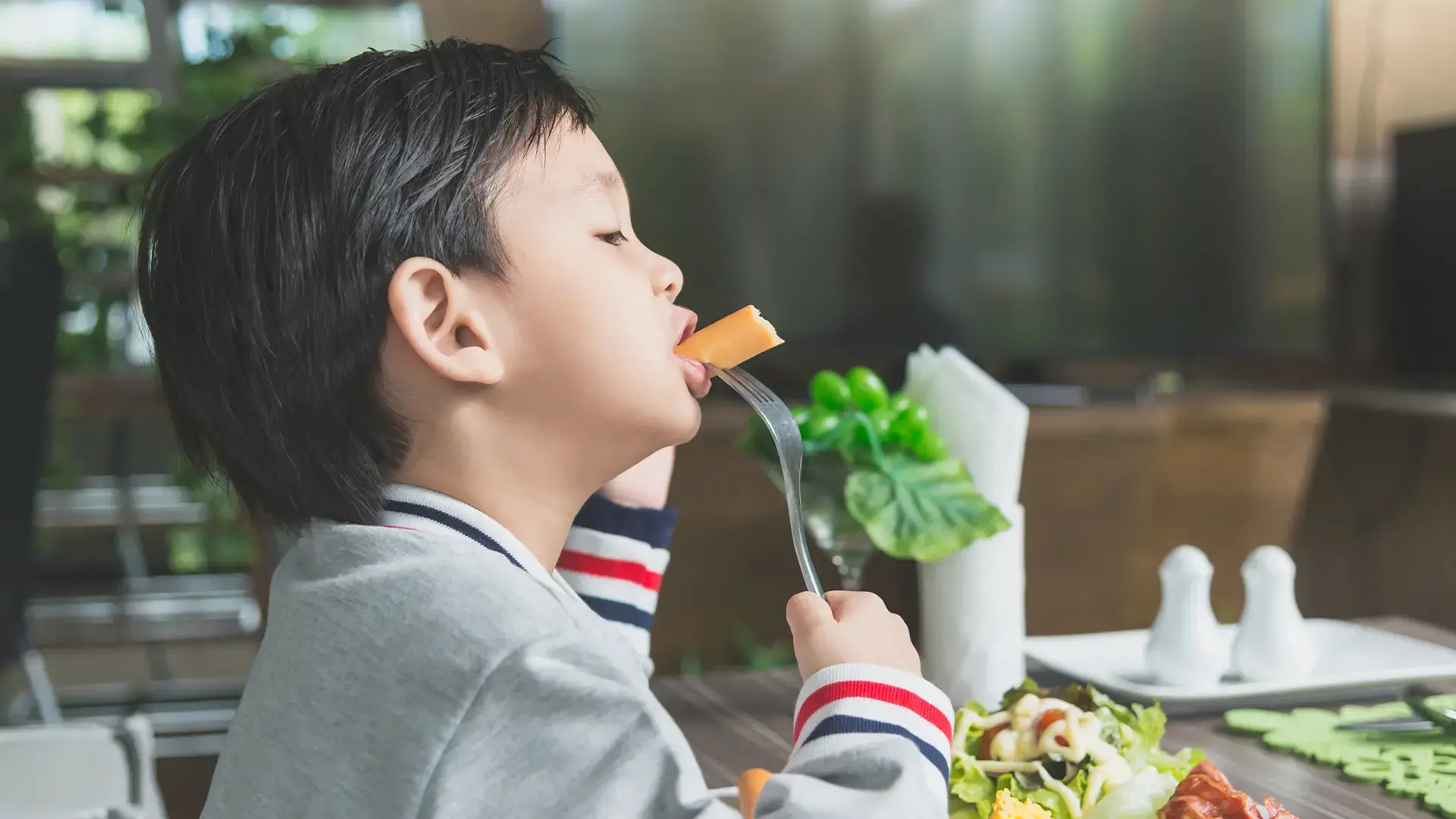Airplane, helicopter, ship, train. All modes of transportation but also synonyms for “spoon” come mealtime with kids. Sometimes though, they don’t exactly feel like opening wide and letting this vessel for food in. This may put a pause on mealtimes, but don’t lose heart. The key to unlocking an easier time at the dining table lies in understanding the root cause of it.
Gain a deeper understanding of the factors influencing your child's eating habits, from distractions and pressure to "neophobia" - the fear of new foods. Discover practical tips to encourage a more adventurous palate in your little ones, including the use of dips, establishing routines, allowing movement, and sparking imagination during mealtimes. Let's make mealtime fun and nutritious together!

There can be literally hundreds of reasons why kids can sometimes be challenging to feed. Don’t worry though, we won’t go through them one by one. Instead, we’ll group them into two categories: external and internal stimuli.
External stimuli
These are the things happening around your kid that affect how they eat. There could be some distractions, like stray toys, pets, or siblings running about. This also includes pressures like when parents say, “you can’t play until you finish your food.” Rather than creating compliance, this sometimes creates resistance and defiance in kids, which is the total opposite of what we want to happen.
Internal stimuli
These are all the factors at work inside the kids, like genetic preferences, intolerances, and patterns that have been reinforced through repetition. One special phenomenon to zero in on is “neophobia,” which makes kids averse and hesitant to try new foods. Neophobia new to you? Don’t be afraid, we’ll let you know what it is and how to deal with it.
Imagine being only a few years old, with little to no reference on generally anything. Every new experience is a sensory overload and might trigger a fight or flight response, especially in kids. So, next time our kids become a little bit wary of what’s for dinner, let’s calm down and remember this fact.
Given time, fear gives way to curiosity, especially when supported by adults in their life. Keep being a patient parent, because there’s several rejections to go through before their adventurous side kicks in. Here’s a few dos and don’ts to help you and your child develop an ideal dining-table dynamic:
Dos
Adding their favorite dip might make the difference between rejection and acceptance.
As mentioned previously, patterns are reinforced through repetition. One example of reinforcing positive patterns is starting to eat as soon as food is on the plate. This helps kids avoid restlessness during mealtimes.
When a toddler becomes restless during meals, let them eat and drink while standing up. Just be careful of where they move around to avoid unnecessary messes.
Kids also display patterns when they get hungry, like a recurring time of day, fidgeting, irritability—this varies from kid to kid. A healthy balanced diet will help kids stay full for longer, so make preparing a full meal your benchmark.
Whether it’s a helicopter, a train, a dragon, or any other thing your kids are fascinated with, incorporating play during mealtimes is a great way to bring out their curiosity. Fruits and vegetables are colorful enough, so arrange them creatively or introduce certain narratives and stories to engage your kids.
Don’ts
Imposing can only make things harder, which can come in the form of lines and phrases like “Basta, it’s healthy” or “Kainin mo nalang.” Incentives work a lot better, like creating a certificate for successfully eating fruits, or scheduling a family trip when a kid finishes a certain meal. However, avoid using sweets as a reward as they may develop a craving for sweets too early.
Children can outgrow neophobia with proper parental support. It’s worth it when you find a better parent-child relationship at the end of the journey!












